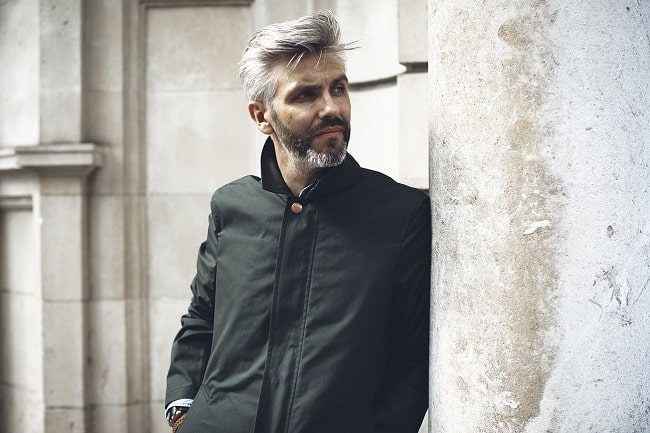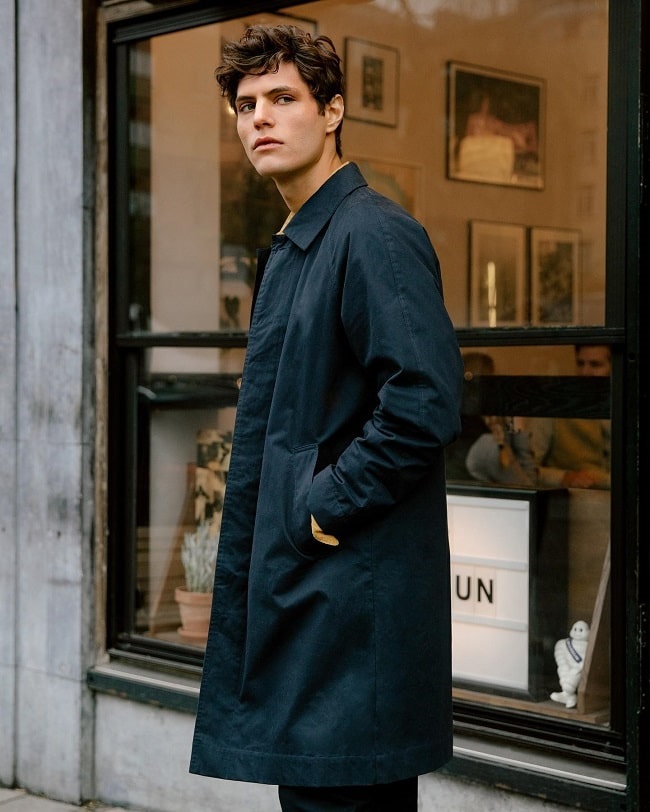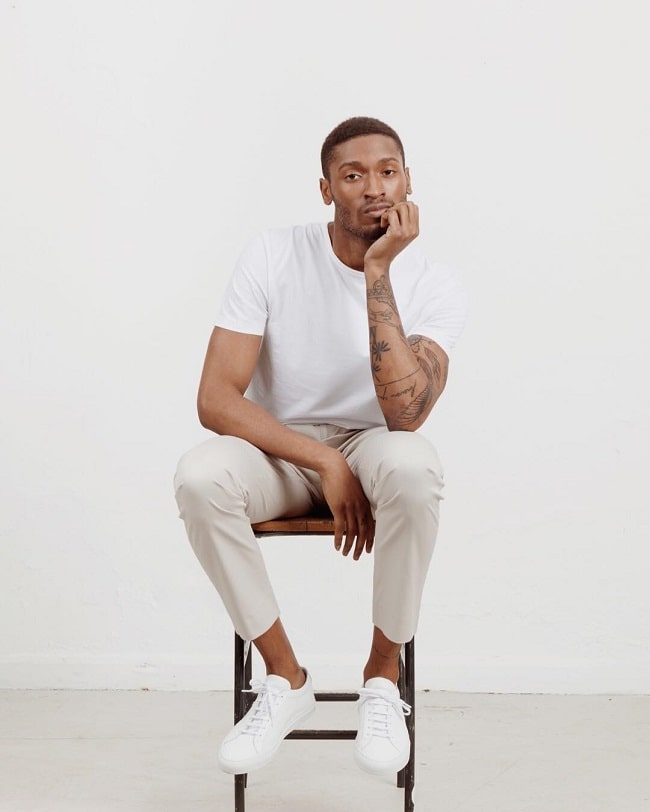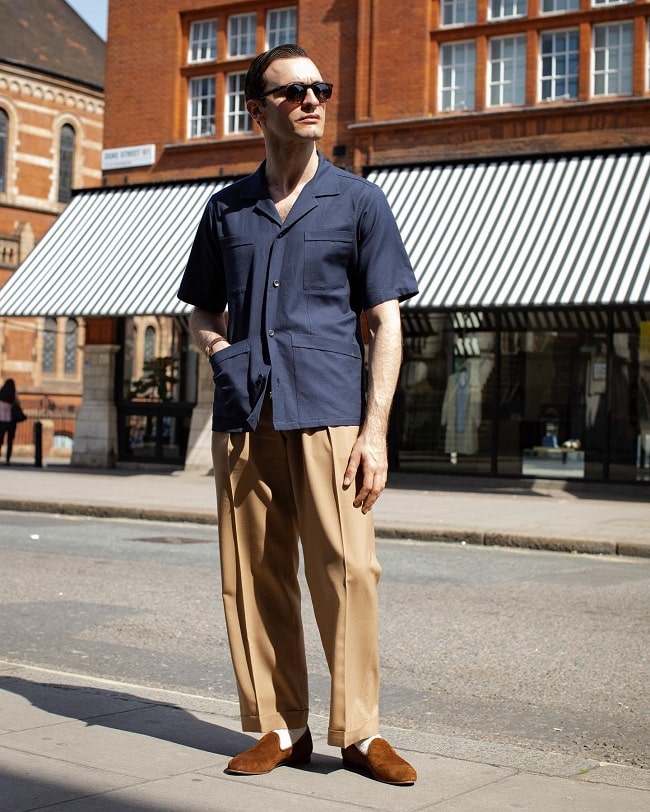1
HOME > Trends >
RESPONSIBLE CLOTHING, UPCYCLING AND THE SLOW MOVEMENT
Written by Menswear Style in Trends on the 28th May 2020

Fashion has historically been about pushing boundaries, making a point, and evolving to match the times. However, in recent years a small, but powerful idea has taken root alongside these staples. An idea that we don’t have to live so fast, that we should take time and enjoy life, fashion and our other pursuits: the slow movement is here, and with it comes slow fashion. Let’s take a look at these ideas to explore what they are, and how recycling clothes and sustainable fashion fit in.
What is the slow movement?
The world moves fast. We’re all striving to reach the next target, meet the next milestone, or find our next step, but the slow movement is a philosophy that encourages a different path. It asks that we all take a minute and savour what we have. Originally, it was a protest against fast food and for locally grown produce, but it’s grown and developed into a culture that encompasses all areas of life from food, to where we live, to how we dress, and more. It’s a way of life that rejects the idea that we need to ‘keep up’ and favours enjoyment, focus, and quality instead.
“It is a cultural revolution against the notion that faster is always better. The Slow philosophy is not about doing everything at a snail's pace. It's about seeking to do everything at the right speed.” - Carl Honoré.

What is slow fashion?
Like the origins of the whole movement, slow fashion is all about sustainability and rejecting the idea of fast fashion. First mentioned by Kate Fletcher of the UK’s Centre for Sustainable Fashion in 2007, the rise of slow fashion reinforces the idea that many of us prefer quality over quantity. It’s a tactile movement that promotes textile recycling, upcycling, and responsible clothing.
Why is slow fashion important?
Waste and the environment are the biggest influencers in slow fashion. A 2017 report from the Ellen Macarthur Foundation calculated that more than $500 billion is lost every year due to clothing being underutilised or not recycled. And it’s estimated that £140 million worth of still-wearable clothes get thrown into landfill every year in the UK. The idea of ‘fast fashion’ is the norm, but slow fashion aims to educate people about these environmental issues and encourages them to shop more responsibly. The fashion industry is already making strides to that aim with reports from the British Fashion Council outlining steps the industry can take to be kinder to the environment. And as there are more online second-hand shops than ever before and increased transparency around brand sustainability – we can see that slow clothing and the slow fashion movement are gaining prominence. According to Mintel 68% of 16-24-year-olds say they are trying to make more ethical fashion purchases now than they did in the last 12 months.

Starting in slow fashion
The move into slow fashion starts with an awareness of spending and how clothes are treated. Once you understand just how much money you use on clothing, and how much gets wasted, you gain an appreciation of quality, sustainability, and longevity. Some designers and brands are now promoting their sustainable products, but research shows that 79% of consumers find it difficult to identify ethical fashion retailers. So, some consumers are turning to more DIY slow fashion ideas:
Buying second-hand: According to Mintel, over half of people aged 25-34 buy second-hand clothing, and thrift, vintage, and second-hand items are long-lasting. They align perfectly with the slow fashion movement and encourage reuse. You don’t have to go to your local charity shop anymore – you can find second-hand designer clothes online. And no problem if it’s not the right size, a good tailor will be able to alter it.
Reuse your clothes: Instead of throwing that too-big jacket or those trousers that ripped, consider getting them repaired or altered professionally, or do it yourself – the research mentioned above says that 50% of 25-34 year olds have repaired damaged or worn our clothes themselves.
Recycling and upcycling clothes is easy: At the end of the day, your clothes are just materials you can use in other projects, so why not try upcycling fashion instead of throwing it away? Make overly worn and ripped jeans into shorts for example – there are loads of ways you can start recycling old clothes.

What happens to clothes recycling?
Even with good quality clothing, there comes a time when it simply can’t be used in its original or upcycled function anymore. But even then, recycling clothes or textiles is possible. There are clothes banks across the UK where you can drop off your unwearable clothes and rags. But where does clothes recycling go? A lot of it gets sent abroad to countries who need it, but a selection of unwearable or unsuitable fabrics get sent on to be born again by specialist recycling companies. These companies take old clothes and recycled fabric to create things like cleaning cloths, wipers, and even face masks too. The slow fashion idea is that we stop living with fast fashion and focus on clothes that last. Clothes that can be worn over and over, then recycled or upcycled and used again and again. It’s a movement that asks for responsibility and quality, and shows us that the fast lane isn’t always the right one.

Trending
2
3
4
5
6
7
8
9
10









